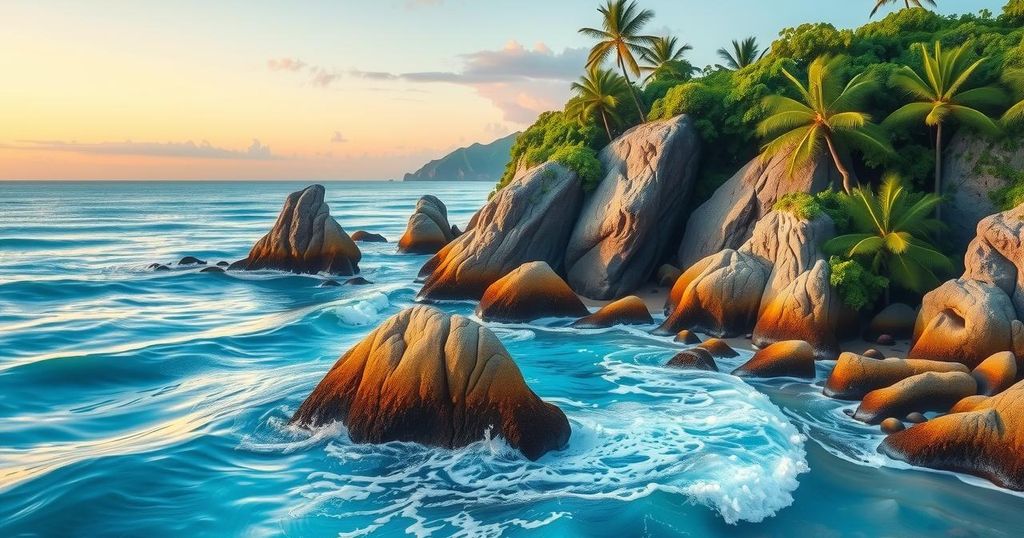Serua Island: Battling Climate Change One Wave at a Time

Serua Island in Fiji is facing severe threats from rising sea levels due to climate change, impacting the island’s native population and culture. Local leaders express concerns about inadequate infrastructure, such as poorly designed seawalls, and emphasize the need for community-driven action to address these challenges and preserve their way of life.
Climate change is often termed as the defining issue of our time, and its reality is becoming increasingly evident since the Paris Agreement was adopted in 2015. The landscape has completely changed. The United States, once a commanding voice in global environmental diplomacy, has shifted under President Donald Trump to a more isolationist approach. As priorities shift to tariffs and global conflicts, the pressing issue of climate change continues to loom largely and largely unnoticed.
The consequences of this policy shift are starkly apparent on Serua Island, located just off the coast of Viti Levu in Fiji. Here, rising sea levels and unpredictable weather patterns pose a direct threat to the community’s survival and traditional way of life. The island has long served as the chiefly home to the paramount chief of Serua Province, which is deeply rooted in the culture and spirituality of the local Fijians.
Recently, a team from The Sunday Times visited Serua to witness firsthand the damage inflicted by the rising seas. Led by village elder Waisale Natuna, who once held the title of Turaga Ni Koro or village headman, it became clear that the severe impacts of climate change have affected their daily lives. “Today, the island is home to just over 100 households. Most of our kin now reside on the mainland in the village of Talenaua,” Natuna stated, emphasizing the loss of population and families split between the island and the mainland.
Natuna recalled the devastation wrought by a cyclone in the 1980s, which marked the beginning of awareness around climate-related disasters. Even establishments like Ratu Latianara Primary School—billed as a safe space—were not immune to flooding. This event catalyzed the realization of the need for proactive responses to potential emergencies linked to climate change.
The most significant government response to such challenges has been the seawall built on the western side of the village in the 1980s. Natuna noted, “The sea wall was built by the Alliance Government in the ’80s. Apart from that, the eastern portion of the island was reclaimed to create more space and prevent coastal erosion.” However, the effectiveness of this seawall has come into question, according to local spokesperson Joseva Robanakadavu, who pointed out flaws in its design.
“The wall has no outlets to allow rainwater to flow back into the sea during heavy downpours,” said Robanakadavu. Consequently, rainwater accumulates, making the land unstable. Both hills on Serua Island, Navua and Dakuiserua, are now facing the threat of landslides—a situation worsened by high tides that reach their bases.
The people of Serua Island face a grim reality as climate change encroaches upon their way of life. Local leaders firmly believe that proactive measures are essential for their survival. Despite government assistance being uncertain, the community remains committed to safeguarding their island, not just for themselves but for the cultural heritage that binds them to their land and sea.
Original Source: www.fijitimes.com.fj






